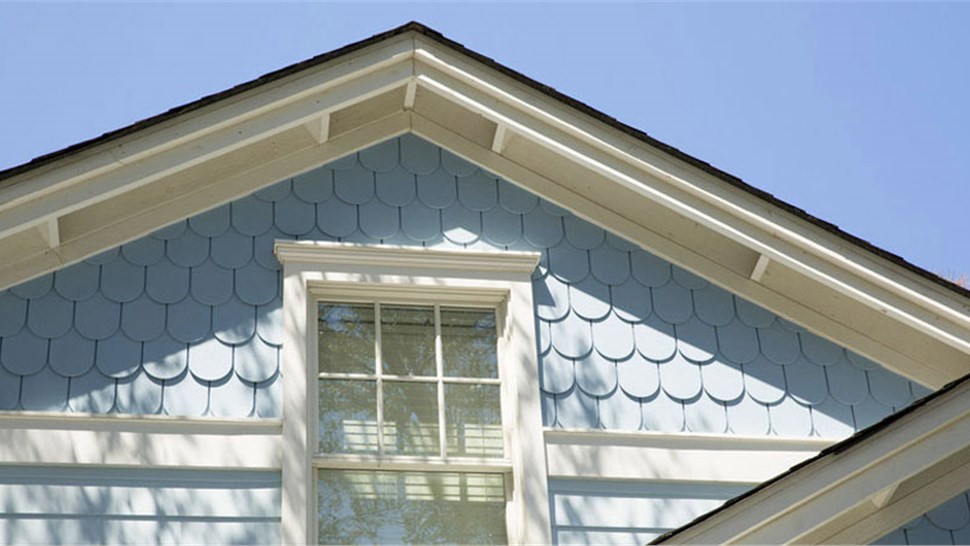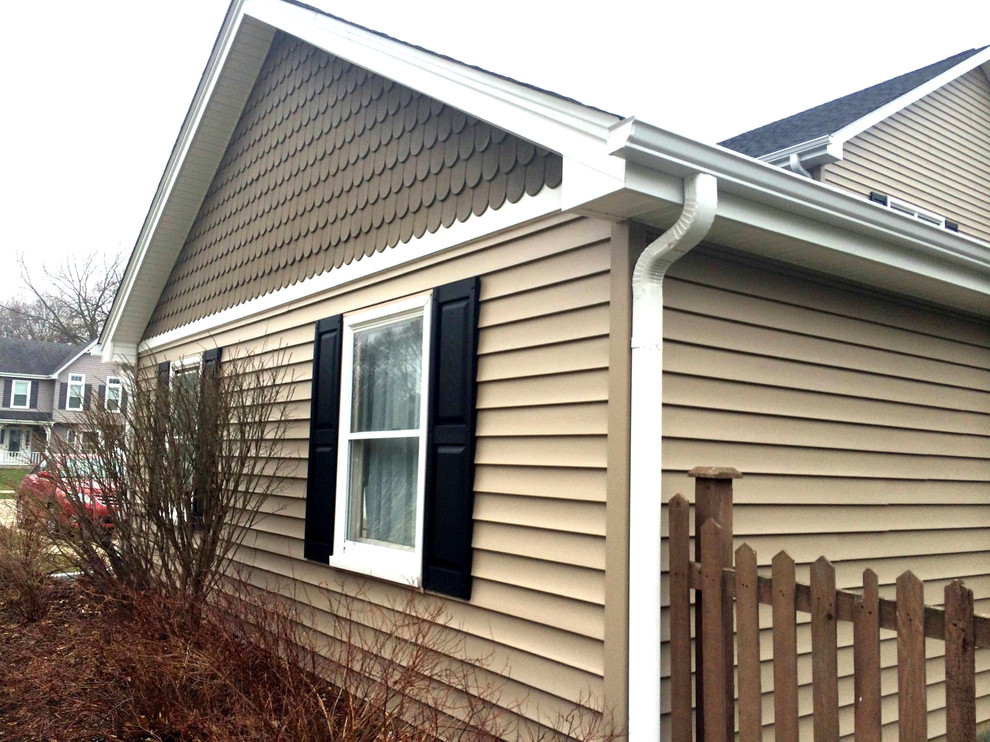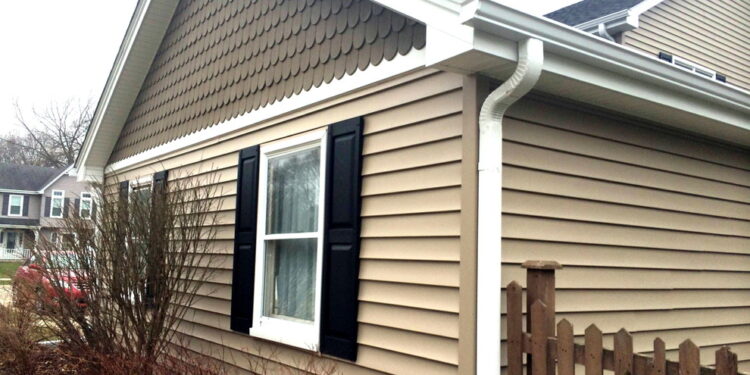Embark on a journey through the world of scalloped exterior siding, where elegance meets functionality in a seamless blend of style and durability. Discover the nuances of this architectural element that can transform the look of any home with its distinct charm and appeal.
As we delve deeper into the realm of scalloped exterior siding, you'll uncover a wealth of information that sheds light on its various types, installation process, maintenance requirements, and the myriad benefits it brings to a property.
Types of Scalloped Exterior Siding
Scalloped exterior siding is a charming and unique option for adding character to a home's exterior. There are several types of scalloped siding to choose from, each with its own distinctive characteristics and aesthetic appeal.
Wooden Scalloped Siding
Wooden scalloped siding is a classic choice that offers a warm and inviting look to a home. It is typically made from cedar or redwood, providing natural beauty and durability. The scalloped edges give a whimsical touch to the exterior, perfect for cottage-style homes or those seeking a traditional look.
Vinyl Scalloped Siding
Vinyl scalloped siding is a popular option due to its affordability and low maintenance. It comes in a variety of colors and styles, allowing homeowners to customize their exterior look. While not as natural-looking as wood, vinyl siding is durable and resistant to rot and pests.
Fiber Cement Scalloped Siding
Fiber cement scalloped siding offers the look of wood without the maintenance issues. It is resistant to fire, rot, and pests, making it a durable choice for homeowners. The scalloped design adds a unique touch to the exterior, blending modern functionality with traditional aesthetics.
Composite Scalloped Siding
Composite scalloped siding is made from a blend of wood fibers and recycled plastics, offering a sustainable and eco-friendly option. It is resistant to moisture, rot, and insects, making it a low-maintenance choice for homeowners. The scalloped edges provide a charming look to the exterior, perfect for those looking for a green building material.Each type of scalloped exterior siding has its own benefits and aesthetic appeal, allowing homeowners to choose the option that best suits their style and needs.
Installation Process
Installing scalloped exterior siding can enhance the aesthetic appeal of your home while providing protection from the elements. The installation process involves several steps, specific tools, and materials to ensure a successful outcome.
Step-by-Step Installation Process
- Prepare the surface: Ensure the exterior wall is clean, dry, and free of any debris before installation.
- Measure and cut siding: Measure the dimensions of the wall and cut the scalloped siding panels accordingly.
- Start from the bottom: Begin installing the siding from the bottom of the wall, ensuring each panel is level and properly aligned.
- Secure the siding: Use nails or screws to secure the siding panels to the wall, making sure they are fastened securely.
- Overlap panels: Ensure each panel overlaps the previous one to prevent water infiltration and create a seamless look.
- Finish with trim: Complete the installation by adding trim pieces around windows, doors, and corners for a polished appearance.
Tools and Materials Required
Before starting the installation process, gather the following tools and materials:
- Scalloped exterior siding panels
- Nails or screws
- Tape measure
- Level
- Saw for cutting panels
- Hammer or screwdriver
- Trim pieces
Tips for Smooth Installation
- Double-check measurements before cutting siding panels to avoid wastage.
- Work methodically from one end of the wall to the other for a consistent look.
- Use a chalk line to ensure straight and even placement of the siding panels.
- Follow manufacturer guidelines for spacing and installation instructions to ensure durability.
- Inspect each panel as you go along to catch any mistakes or issues early on.
Maintenance and Care

Proper maintenance is essential for ensuring the longevity and aesthetic appeal of scalloped exterior siding. By following a few key steps, you can keep your siding looking great for years to come.
Maintenance Requirements
- Regular cleaning with a mild detergent and water to remove dirt and debris.
- Inspecting for any signs of damage, such as cracks or rot, and addressing them promptly.
- Repainting or resealing the siding as needed to protect it from the elements.
Common Issues
- Water damage: Ensure proper drainage to prevent water from seeping behind the siding.
- Pest infestations: Regularly inspect for signs of insects or rodents and take appropriate measures.
- Fading or peeling paint: Repaint the siding when the paint starts to fade or peel to maintain its appearance.
Tips for Prolonging Lifespan
- Trim any nearby trees or bushes to prevent damage from branches rubbing against the siding.
- Avoid using harsh chemicals or power washers, as they can damage the siding.
- Consider applying a protective coating to enhance durability and resist fading.
Benefits of Scalloped Exterior Siding

Scalloped exterior siding offers numerous benefits that can enhance the appearance and durability of a home.
Enhanced Curb Appeal
Scalloped siding adds a unique and charming look to the exterior of a home, creating a visually appealing aesthetic. The scalloped edges provide a distinctive touch that can make a property stand out in the neighborhood.
Durability and Weather Resistance
Despite its decorative design, scalloped exterior siding is also durable and weather-resistant. Made from high-quality materials, such as vinyl or fiber cement, this type of siding can withstand harsh weather conditions, including extreme heat, cold, and moisture. It is known for its longevity and ability to maintain its appearance over time.
Low Maintenance
Scalloped siding requires minimal maintenance compared to other types of exterior cladding. It is easy to clean and does not require regular painting or staining, saving homeowners time and money on upkeep. This makes it a practical choice for those looking for a beautiful yet low-maintenance siding option.
Closing Summary
In conclusion, scalloped exterior siding stands out as a versatile and visually appealing choice for homeowners looking to elevate the aesthetics of their dwellings. With its unique charm and practical advantages, this type of siding offers a winning combination of style and substance that can enhance the overall appeal and value of any home.
FAQ Compilation
What are the common types of scalloped exterior siding available?
Examples include fish scale, half-round, and octagonal shingles, each with its unique aesthetic appeal.
What tools and materials are needed for installing scalloped exterior siding?
Basic tools like a hammer, saw, level, and materials such as siding panels, nails, and trim pieces are essential for a successful installation.
How can I ensure the longevity of scalloped exterior siding?
Regular cleaning, timely repairs, and proper maintenance can significantly extend the lifespan of scalloped siding.


